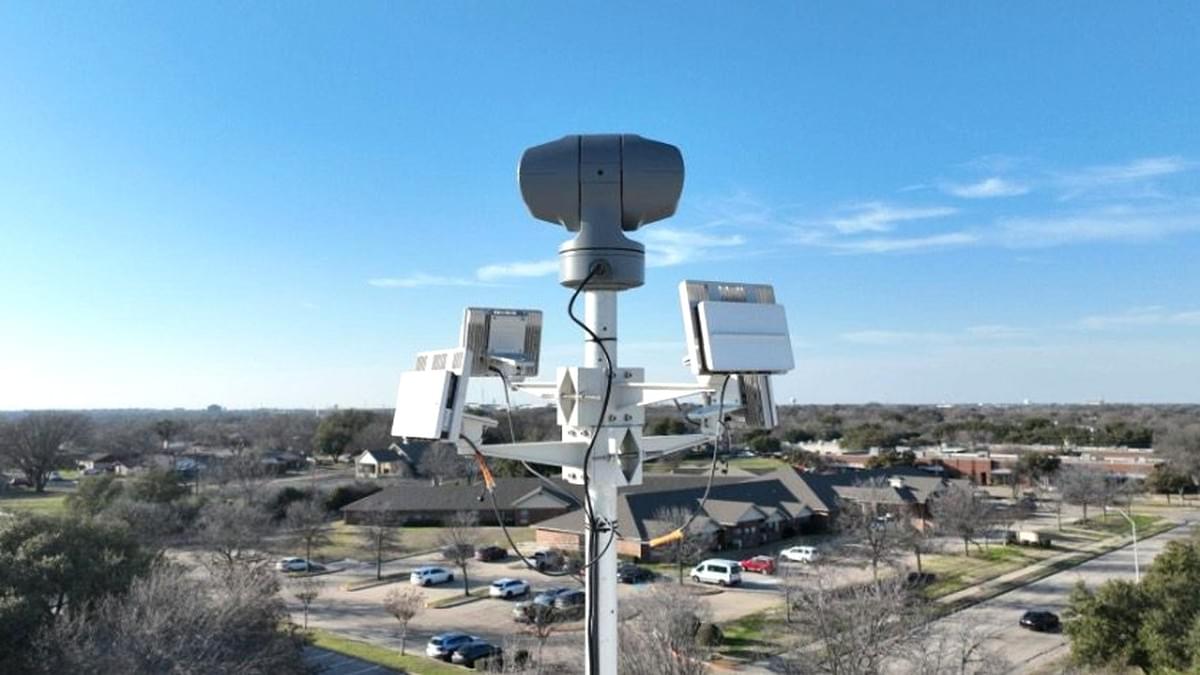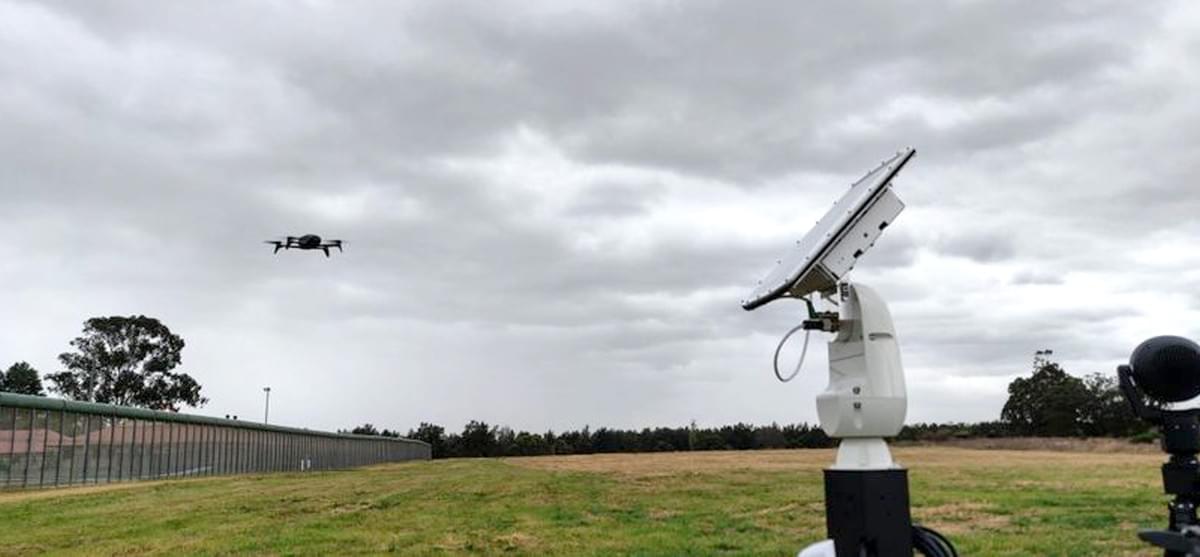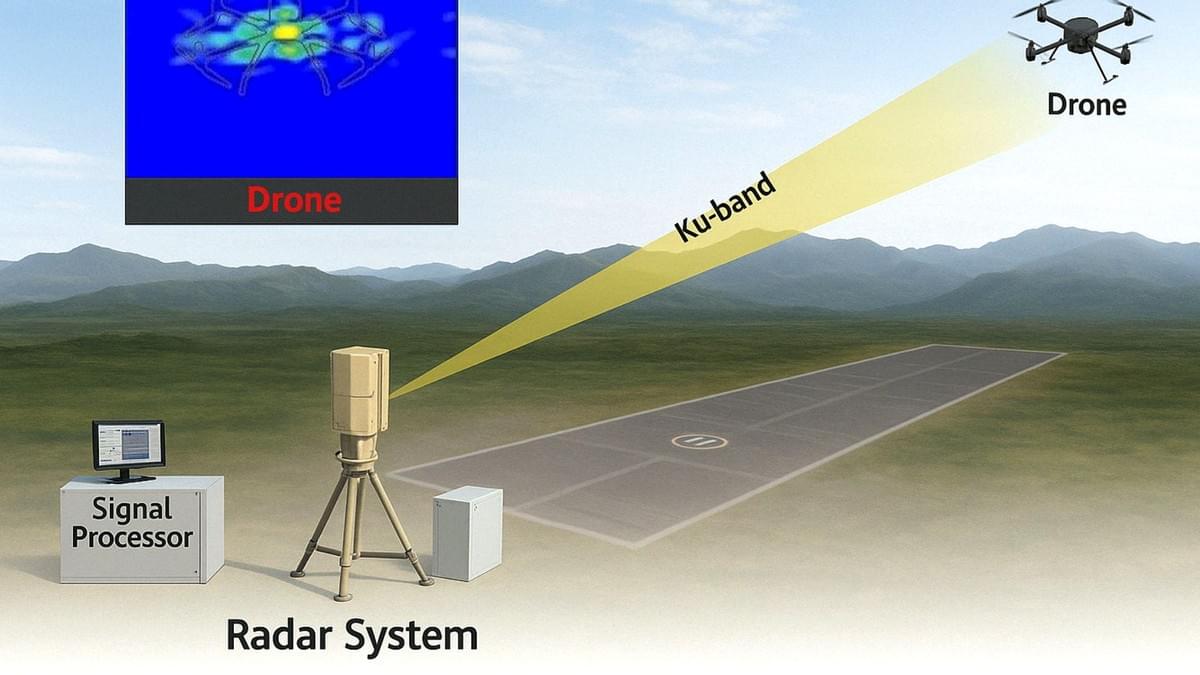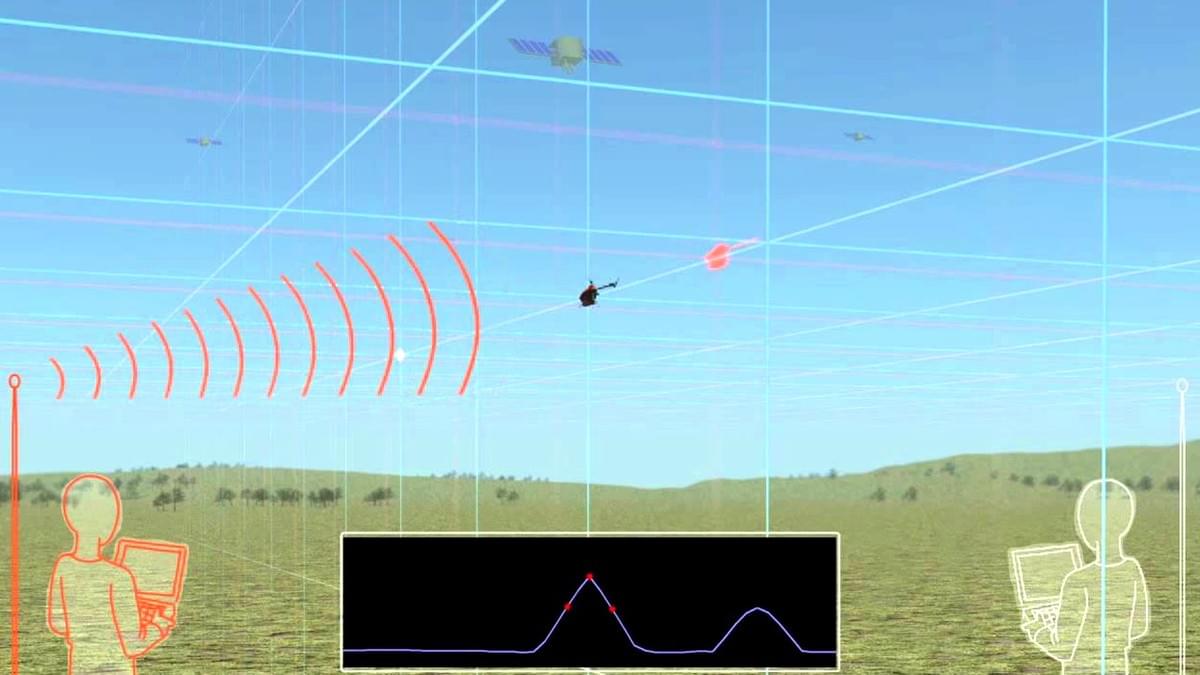In today's rapidly evolving technological landscape, the prevalence of drones has soared, bringing about a wide array of applications. However, this surge in drone usage has also given rise to various concerns, making drone detection radar an indispensable technology. Drone detection radar plays a pivotal role in safeguarding our airspace, security, and privacy.
Understanding Drone Detection Radar
Definition and Basic Functionality
Drone detection radar is a specialized radar system meticulously designed to identify, track, and manage the presence of unmanned aerial vehicles (UAVs), commonly referred to as drones. These sophisticated systems harness the power of electromagnetic waves to detect and monitor the movement of drones, furnishing real-time data on their location, speed, and trajectory. By astutely analyzing radar signals reflected from drones, these systems can discern them from other objects in the airspace, such as birds or debris, and are even capable of detecting seemingly undetectable objects.
How Drone Detection Radar Operates
Drone detection radars are advanced marvels of engineering, capable of tracking, detecting, and classifying drones and other small objects that traditional radars often overlook. Leveraging 3D technology and long-range classification capabilities, these radars minimize false alarms from objects like birds and afford teams more response time upon drone detection. They operate by emitting radio waves that bounce off objects in their path, and the returned signals are processed to precisely determine the drone's location and movement. These systems possess the remarkable ability to simultaneously track multiple drones, offering comprehensive surveillance coverage. Advanced radars enhance detection accuracy and distinguish drones from other small objects through techniques such as the micro-Doppler effect and frequency modulation.
The Advantages of Drone Detection Radar
Wide Coverage Area
One of the most compelling advantages of drone detection radar is its ability to cover large areas. Radar systems can provide extensive surveillance without the need for an overwhelming number of devices. For instance, in large industrial complexes, a single well-placed radar can monitor a vast expanse, ensuring that no unauthorized drone can enter the area unnoticed. This wide coverage area is a boon for security personnel as it reduces the manpower required for continuous visual surveillance.

All-Weather Capability
Unlike optical systems that are severely hampered by adverse weather conditions, radars function with remarkable effectiveness in various weather scenarios. Whether it's pouring rain, dense fog, or heavy snow, radar systems can continue to operate seamlessly. This all-weather capability is of utmost importance in critical infrastructure protection, such as airports and power plants, where security cannot be compromised due to weather conditions. For example, in a foggy day at an airport, the radar can still accurately detect any approaching drones, allowing the authorities to take appropriate action promptly.
High Detection Accuracy
Advanced radar systems are engineered to accurately detect and classify drones based on a multitude of factors, including their size, speed, and flight patterns. Through the use of sophisticated algorithms and advanced signal processing techniques, these radars can distinguish between different types of drones, whether they are small consumer-grade models or larger, more sophisticated industrial drones. This high detection accuracy ensures that security teams can respond appropriately to the specific threat posed by each drone.
Real-Time Tracking
Drone detection radars offer real-time data, which is crucial for immediate response to potential threats. As soon as a drone enters the radar's detection range, its presence is instantly registered, and its movement is continuously tracked. This real-time tracking enables security personnel to make informed decisions promptly. For example, in a high-security government facility, if a drone is detected approaching, the security team can quickly mobilize and take measures to neutralize the threat before it can cause any harm.
Minimal False Alarms
By leveraging advanced technologies such as micro-Doppler analysis and machine learning algorithms, radar systems can effectively distinguish drones from birds and other objects. This significantly reduces the number of false alarms compared to other detection methods. For instance, in an area with a high population of birds,traditional detection methods may generate frequent false alarms, but a well-calibrated radar system can accurately identify and filter out bird movements, focusing only on potential drone threats. This not only saves time and resources but also ensures that security teams can respond to actual threats without being distracted by false alerts.
Applications of Drone Detection Radar

Critical Infrastructure Protection
Critical infrastructure, such as power plants, water treatment facilities, and oil refineries, is highly vulnerable to drone attacks. Drone detection radar serves as a crucial line of defense in safeguarding these facilities. It can detect any unauthorized drones approaching the perimeter and provide early warnings to security teams. For example, in a power plant, the radar can continuously monitor the airspace around the facility. If a drone is detected, the security team can quickly assess the situation and take appropriate measures, such as deploying counter-UAS technologies to neutralize the threat. This helps prevent potential damage to the infrastructure, which could have far-reaching consequences for the community and the economy.
Airport Security
Airports are particularly sensitive areas where the presence of unauthorized drones can pose a significant risk to aviation safety. Drone detection radar is an essential component of airport security systems. It can detect drones in the vicinity of the airport, including in the approach and departure paths of aircraft. By providing early detection, the radar allows airport authorities to take immediate action to prevent any potential collisions between drones and aircraft. This may involve notifying air traffic control, deploying counter-UAS measures, or diverting aircraft to ensure safe operations.
Homeland Security
In the realm of homeland security, drone detection radar plays a vital role in protecting national borders, government buildings, and other sensitive areas. It can detect drones that may be used for espionage, smuggling, or terrorist activities. For example, along a national border, the radar can monitor the airspace for any unauthorized drones attempting to cross the border. In the case of government buildings, the radar can provide continuous surveillance to prevent drones from getting close enough to capture sensitive information or cause damage. This helps maintain the security and integrity of the nation.
Prison Security
Prisons are increasingly at risk of drone - related security breaches, such as drones being used to smuggle drugs, weapons, or communication devices to inmates. Drone detection radar can be deployed around prison perimeters to detect any incoming drones. Once detected, security personnel can take swift action to prevent the drones from reaching the inmates. This may involve using counter-UAS measures to intercept the drones or alerting law enforcement agencies. By using drone detection radar, prisons can enhance their security and prevent illegal activities from occurring within their premises.
Event Security
Large - scale events, such as sports stadiums, music concerts, and political rallies, attract a significant number of people. The presence of unauthorized drones at these events can pose risks to public safety and privacy. Drone detection radar can be used to monitor the airspace around the event venue. If a drone is detected, security teams can quickly determine whether it poses a threat and take appropriate action. This may include asking the drone operator to land the drone if it is a recreational user flying in a restricted area or deploying counter - UAS measures if the drone is suspected of having malicious intent.
Types of Drone Detection Radars

High - Frequency Radars
High - frequency radars operate at higher frequencies, offering greater resolution and the ability to detect smaller drones with remarkable precision. They are particularly well - suited for environments where precision is of the essence, such as urban areas or around critical infrastructure. In urban areas, where there may be a high density of small, consumer - grade drones, high - frequency radars can accurately identify and track these drones, even in the midst of other electromagnetic interference. Their high resolution allows for the differentiation of drones from other small objects in the airspace, reducing the likelihood of false alarms.
Long - Range Radars
Long - range radars are designed to detect drones at extended distances, often up to several kilometers. These radars are ideal for applications such as border security and large - scale industrial site protection. For example, in border security, long - range radars can detect drones approaching the border from a significant distance, giving security forces ample time to respond. In large industrial sites, such as oil and gas fields that cover vast areas, long - range radars can provide comprehensive surveillance, ensuring that no unauthorized drones can enter the site unnoticed.
Portable Radars
Portable drone detection radars are lightweight and easy to transport, making them suitable for a variety of applications, including mobile security operations and temporary event security. They can be quickly set up and deployed in different locations as needed. For example, in a mobile security operation, such as a convoy escort, a portable radar can be carried along and set up at strategic points to detect any drones in the vicinity. In temporary event security, like a local fair or a small - scale music festival, portable radars can be easily transported to the venue and set up to monitor the airspace for unauthorized drones.
Integration with Other Systems
Multi - Sensor Integration
Integrating drone detection radar with other sensors, such as infrared cameras, acoustic detectors, and RF sensors, can significantly enhance the overall effectiveness of a drone detection system. Each sensor type brings its unique strengths to the table. Radar can provide precise location tracking, while infrared cameras offer visual confirmation of the detected drone, allowing security personnel to identify the type and model of the drone. Acoustic detectors can pick up the sound of the drone's motors, providing an additional layer of detection, especially in areas where radar signals may be blocked or in low - altitude flights. RF sensors can detect the radio frequency signals emitted by the drone's control system, further aiding in the identification and tracking process. By combining the data from these multiple sensors, a more comprehensive and accurate picture of the drone's presence and movement can be obtained.
Integration with Counter - UAS Systems
Drone detection radar is often integrated with counter - UAS systems, which are designed to neutralize or mitigate the threat posed by drones. Once a drone is detected by the radar, the information can be fed directly into the counter - UAS system, which can then take appropriate action. This may include using jamming devices to disrupt the drone's communication and control signals, causing it to land or return to its starting point. In some cases, more advanced counter - UAS systems may use physical means, such as nets or lasers, to physically intercept the drone. The seamless integration of drone detection radar with counter - UAS systems ensures a swift and effective response to any detected drone threat.

Future Trends in Drone Detection Radar Technology
Advancements in AI and Machine Learning
Artificial intelligence (AI) and machine learning are set to revolutionize the field of drone detection radar. AI - powered algorithms can analyze radar data in real - time, improving detection accuracy and reducing false alarms. These algorithms can learn from past data and adapt to new and evolving drone technologies. For example, as new types of drones with advanced anti - detection features emerge, AI - enabled radar systems can analyze the unique characteristics of these drones and develop new detection models. Machine learning models can also be used to classify drones more accurately, taking into account factors such as flight patterns, speed changes, and electromagnetic signatures. This continuous improvement through AI and machine learning will make drone detection radar systems more effective in the face of an ever - changing drone threat landscape.
Miniaturization and Cost - Effectiveness
As technology advances, there is a growing trend towards miniaturization of drone detection radar systems. Smaller and more compact radars will be easier to deploy in a wider range of applications, including on - board vehicles, small - scale security installations, and even wearable devices in some cases. Additionally, the cost of these radar systems is expected to decrease, making them more accessible to a broader range of users, including small - to - medium - sized businesses and individual security enthusiasts. This combination of miniaturization and cost - effectiveness will lead to increased adoption of drone detection radar technology across various sectors.
Enhanced Detection Capabilities
Future drone detection radar systems are likely to offer enhanced detection capabilities, such as the ability to detect even smaller and more stealthy drones. New radar technologies, such as advanced millimeter - wave radars and quantum - enhanced radars, are being developed that promise to provide higher resolution and greater sensitivity. These radars will be able to detect drones with extremely low radar cross - sections, which are currently difficult to detect using traditional radar systems. Additionally, future radars may be able to detect drones at even greater distances and in more challenging environments, such as in the presence of strong electromagnetic interference or in complex urban landscapes.
In conclusion, drone detection radar is an essential technology in today's world, where the increasing use of drones has brought both opportunities and challenges. With its numerous advantages, wide range of applications, and continuous technological advancements, drone detection radar will continue to play a crucial role in safeguarding our security, privacy, and critical infrastructure. Whether it's protecting airports, critical infrastructure, or ensuring the safety of large - scale events, drone detection radar provides the necessary early warning and tracking capabilities to keep us safe from the potential threats posed by drones. As technology evolves, we can expect even more advanced and effective drone detection radar systems to emerge, further enhancing our ability to manage and mitigate the risks associated with drone usage.

